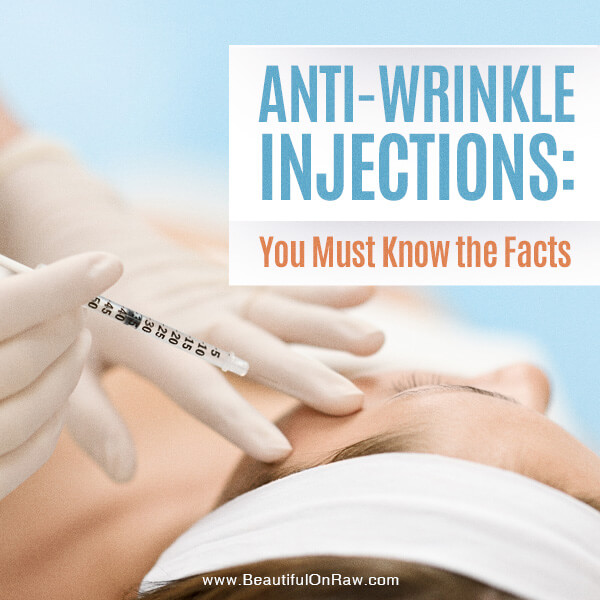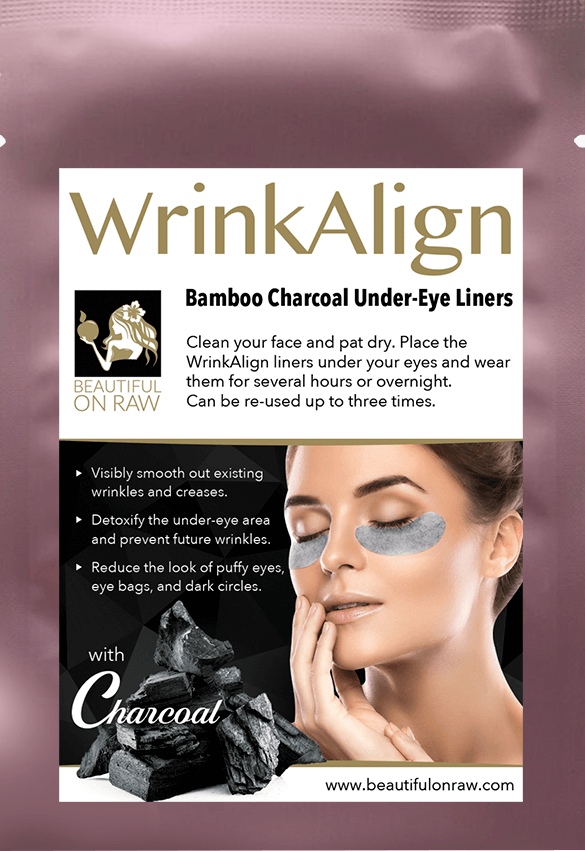Anti-wrinkle Injections: You Must Know the Facts

Thanks to our culture’s buy-in to modern pharmaceutically based medicine, we’ve inherited the notion that if something is injected through a needle wielded by someone in a lab coat, it’s a good thing…or at least a safe thing.
Lets take a look at anti-wrinkle injections. Your basic injectable wrinkle remedy works this way: the goal is to fill wrinkles and creases with either a synthetic filler or a biocompatible one. Like plastering gaps in new drywall, the process makes the wrinkles and cracks disappear. That is, until they reappear.
Biocompatible fillers are those the body will gradually absorb. The "classics": collagen and hyaluronic acid (HA). These typically last six to nine months before being absorbed by the body.
Hyaluronic Acid
Whether the brand name is Juvederm, Restylane or Perlane, they are all just trade names for HA fillers. Most negative side-effects—irritation, itching, redness, infection, bumps, swelling and the like—usually last about a week. But besides the risk of infection, HA injections sometimes produce little lumps under the skin, which may gradually disappear. Another side-effect, known as the “Tyndall Effect,” is quite visually disturbing: when an HA injection is made too close to the skin’s surface, it may cause a translucent blue cast. Though it is treatable, recipients comment that it’s definitely annoying.
What should worry you more, is the possibility of long-term adverse effects of injecting HA into your body, such as chronic lymphoplasmacytic inflammatory reactions and foreign body-type granulomatous reactions, as this research article explains. HA isn't bad in and of itself (it is naturally made by our bodies after all), and there are certainly benefits for using HA topically. That's why I included it my Cleanser. But when you are injecting it, that's when problems arise as explained in the research article.
Well if we don't want to be injecting HA, what about other biocompatible fillers?
Collagen Injections
Collagen injections last for shorter times—under six months, which of course means if you go for it, you are going to have to keep coming back. In the past, bovine collagen was used but because of extremely short-lasting results and higher risk of allergic reaction, these days there are generally two choices-Autologen or Dermalogen, with the former being collagen harvested from somewhere else on your body and the latter taken from deceased human donors. Neither situation sounds very appealing to me.
It’s true that many people think collagen produces the most natural look, we all, however, have seen the results of excessive injections: lips ballooned to a cartoonish size. Beyond this unsightly situation, allergic reactions are common (if using Dermalogen), along with swelling, bruising and redness at injection sites.
There are more serious things to be concerned about, however. If you scratch and aggravate the lips at all (very common because of itching being a common side effect), this can lead to open sores and bacterial infection possibly causing an abscess to form in the injection site.
Synthetic Fillers
Silicon is the best known synthetic filler. Once universally available, silicone injections are banned now in all but a few western countries. (There is, though, a thriving “black market” in which backroom operators, unlicensed, will inject you anywhere you want. The risks are overwhelming.) Migration and inflammation can lead to costly corrective surgery and related risks, not to mention distorted features. Some studies have even linked injected silicone to blindness.
With silicon having been red flagged, new synthetic fillers got in the game. With wonderfully-sounding names like Radiesse and Sculptra, women get excited about synthetic fillers because they are supposed to be “permanent,” but some disappointed patients claim the effects actually last only a year or two. Rejection by the body’s immune system is a real risk and, if you have such a reaction, good luck getting the injected filler out. Sometimes, too, the injected material may migrate from the desired site to somewhere else quite unexpected. The immune system may also attempt to seal off the injected material in fibrous tissue, creating noticeable lumps under the skin. Perhaps the saddest of potential side effects if the injection is not done correctly is the risk of permanent disfigurement.
You Can't Trick Your Body
You cannot trick the body for long by sticking into it something from the outside, which is why these treatments require repeated visits and payments. As I’ve written about repeatedly, the way to a beautiful exterior always begins on the inside. Not only that, but using unnatural practices can cause you more trouble if you are trying to lead a natural lifestyle, as I’ve discussed in Health and Beauty: When Natural and Unnatural Practices Clash.
One of my readers who has suffered through repeated injections and other “professional treatments” in attempts to stay youthful has graciously allowed me to share story in this Blog post: Cosmetic Procedure Went Wrong. Before you consider injecting, lasering or peeling anything, I suggest you read it.
Please, keep in mind, injections get reabsorbed, skin needs to be retightened. Facelifts, no matter how well done, leave scar tissue that bunches up the underlying fascia, preventing good blood supply to the skin. Some cosmetic procedures do not go well with facial exercises, facial massage and dry brushing—the very procedures that give you real youthfulness, from the inside out.
Botox
Botox doesn’t fit neatly into either the biocompatible or synthetic injection categories. Most know by now that the trade name Botox stands for bovine toxin. Yes, indeed: toxin from a cow. It’s “natural” stuff, organic. But it’s not a filler. Botox works by blocking neural impulses. Muscles can’t contract, so wrinkles tend to relax and soften. You’ll see results in days, lasting up to six months. Then…re-treatment. On the upside, the return of wrinkles lessens, in appearance, as treatments continue. The Botox, once injected, does metabolize. How much is needed is hard to gauge, as bodies will metabolize the product at varying rates.
Side effects can be downright frightening. Many people report problems swallowing and breathing—and some have died. The botulinum toxin can affect body areas far from injection sites, leading to overall muscle weakness. The list goes on: double or blurred vision, hoarseness, loss of voice, bladder problems, headache, neck pain, dry mouth, bruising, trouble articulating words, asthma symptoms, wheezing, respiratory infection, indigestion, dizziness, nausea, and serious allergic reactions (itching, rashes, welts) have all been reported. One common unfortunate cosmetic side effect: drooping eyelids, marring the user’s appearance.
There are even psychological side effects. Some users become addicted to Botox. The addiction isn’t physical, but some Botox fans become utterly obsessed with the notion they must remain completely wrinkle-free. The ultimate symptom of the Botox-binger: the “frozen face” we’ve seen on more than a few celebrities. Read more about Botox injections in Botox Alternatives.
I've tried to be impartial. But naturally I can't be totally unbiased. My message: No matter what you decide to do, get yourself healthy first, try natural methods first. When you do, there's a great chance you'll forgo any thoughts of cosmetic 'procedures' as you enjoy the remarkable restorative power of simple good health...
The best part: You become loving and accepting about your appearance. You feel good about yourself. And that makes you beautiful.


